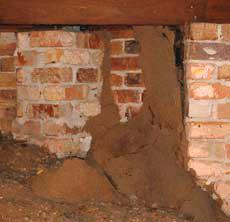It is important to develop a system for the whole of a property against future termite damage.
Staff Writer | Date: 27 January 2014
Nearly all houses in Zimbabwe are at risk of termite damage and attack, not just timber ones. Steel framed and masonry houses are also at risk of attack.
In addition to wood, termites damage can happen to:
- plasterboard
- carpets
- plastics
- books
- artwork
- clothes
- electrical insulation and fitout timbers.
The potential for attack varies according to the location of the house and specific features of the local environment.
Contact us if termites are threatening your building structure on +263-772-593-344
Termite management systems
It is important to develop a system for the whole of a property. Usually this is a barrier system built in at the time of construction that is designed to assist inspecting for termites.
Termites tend to attack from underground. Termite barriers built into houses don’t prevent termites getting in but provide inspection points to detect termite activity.
Common types of barriers that assist detection
Termite barriers are inspection systems rather than prevention systems. Regular inspection of the barriers to look for termite entry at these locations assists with detecting and treating termites.
The common types of barriers are:
- concrete slab – solid concrete unit constructed to prevent termite penetration
- crushed stone – layer of stone particles too hard and heavy for termites to penetrate
- sheet capping – sheet material (e.g. metal) used as an isolated or continuous subfloor barrier
- stainless steel mesh – termite proof mesh used as an isolated or continuous barrier
- chemicals – periodic application of chemicals around or under buildings to repel or kill termites.
If your property has been treated for termites a notice of treatment is commonly fixed in the electrical meter box or near any access door to an underfloor space.
Identifying high risk building sites
Some building sites pose a greater risk of termite attack than others. High risk sites include:
- large and established sources of termite food and nesting near the site – eg bushland
- permanently damp ground increases the ability of termites to attack – ie they can more readily build mud tunnels from the ground into the house
- when building right up to the boundary, inspections may not be possible from the neighbour’s property, thus increasing the risk of hidden attack
- when adding house extensions, problems such as barrier continuity, subfloor ventilation and subfloor access may increase the risk of attack.
If you are faced with any of these issues, it is best to deal with them before building. Contact your builder or designer to find out what the minimum requirements are.
Building requirements
New buildings that are located in areas susceptible to termite attack are required to have all of the main structural elements protected against the risk of termite attack where materials susceptible to damage are used.
Buildings that are constructed entirely of metal, concrete, masonry and termite resistant timber are not required to comply.
Where a building is required to be protected from termite attack by a barrier or combination of barriers, a durable notice must be permanently fixed to the building in a prominent location that indicates:
- method of termite risk management
- date of installation of the system
- where a chemical barrier is used, its life expectancy as listed on the National Registration Authority label
- the installer's or manufacturer's recommendations for the scope and frequency of future inspections for termite activity.
Contact us if termites are threatening your building structure on +263-772-593-344
